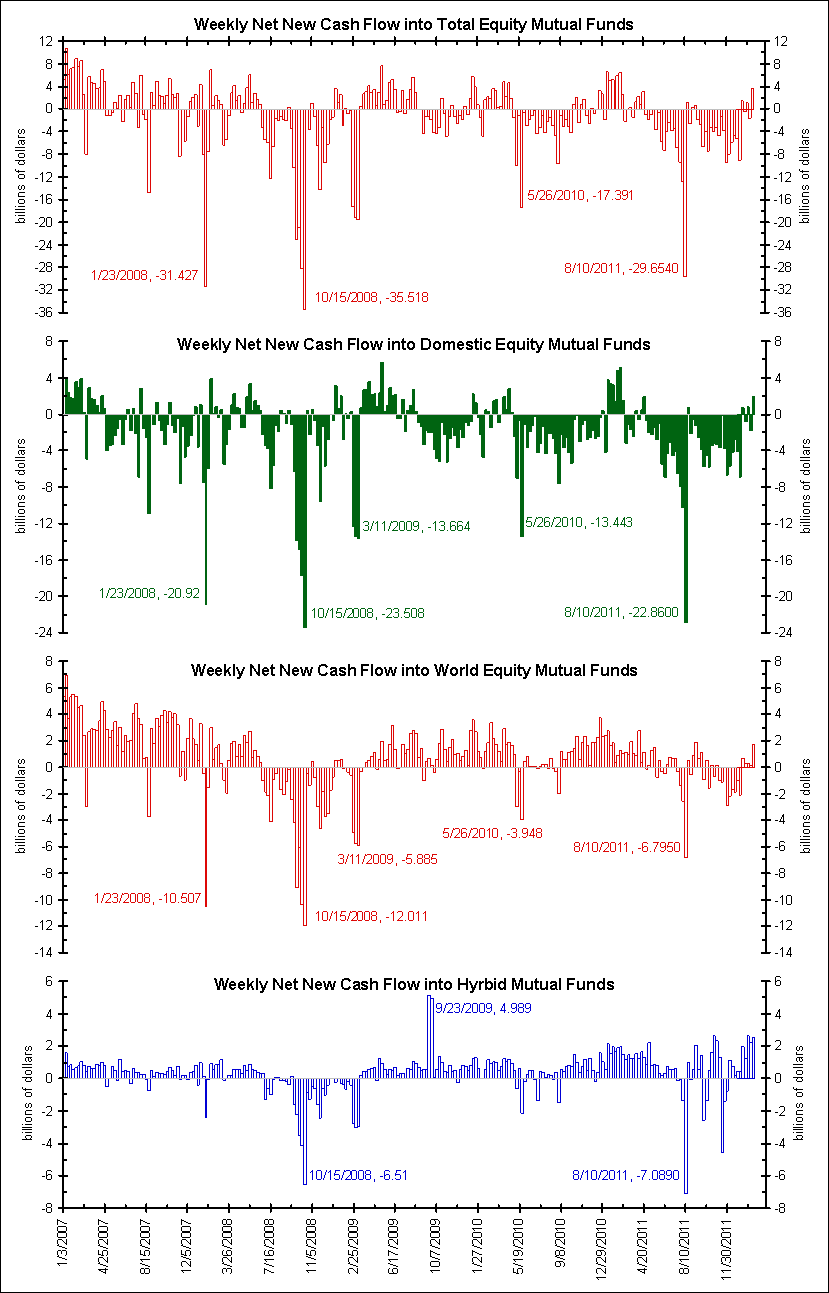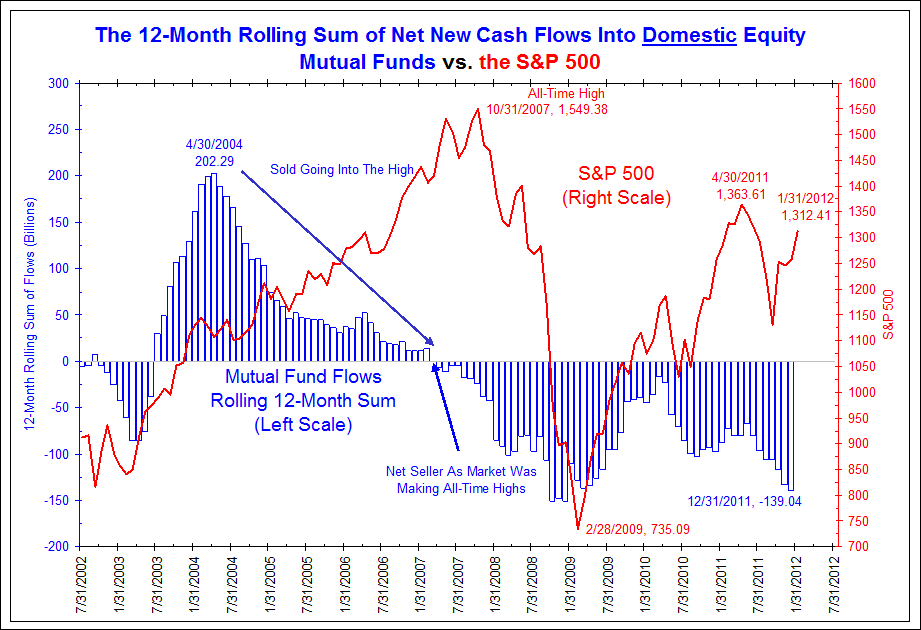Click to enlarge:
MarketBeat (WSJ Blog) – Morning MarketBeat: Retail Investors Chasing Stocks at Wrong Time?
Investors are finally putting money into domestic equity funds. Their timing couldn’t be worse. The Dow Jones Industrial Average’s biggest selloff of 2012 coincided with data showing domestic equity funds registered their biggest weekly inflows in nearly a year. Ironic, no? It only took a 20% rally off the October lows for investors to finally feel confident enough to trickle back into the stock market. The rise in fund flows coincides with a surge in bullish sentiment, underscoring how the average investor is finally starting to put their money where their mouth is. The big worry is they could be too late to the game. A prevailing theme among portfolio managers and analysts is the great stock rally of 2012 has been showing signs of fatigue. Few would be surprised by a short-term pullback, especially as wrangling over Greece’s bailout continues and as corporate profits, ex-Apple, have been less than stellar…Nevertheless, investors chose the first week of February as the time to park cash into the stock market. Domestic equity funds raked in about $1.9 billion in the week ended Feb. 8, according to the most recent data from the Investment Company Institute, released yesterday afternoon. The weekly net inflow was the largest since the week ended April 20, 2011. Domestic stock funds have experienced net inflows during three of the first six weeks of the year, highlighting how risk appetite has started to percolate in the early part of 2012. These funds haven’t had a full month of inflows since April, according to ICI.
Comment
We would not make any sweeping assumptions about stock market based solely on the recent inflows seen in equity mutual funds. First, the inflows themselves are nothing to write home about. As the chart above shows, they can be considered noise in the larger scheme of outflows seen over the past few years. The inflows would have to be sustained for a longer period of time and in larger quantities to become meaningful.
Secondly, as we have written many times before, mutual fund investors have actually timed stock market swings perfectly over the last several years. They began paring their inflows into the peak and became net sellers just as the stock market peaked in 2007. While these flows have historically been known as a contrarian indicator, this has not been the case recently.
Source: Bianco Research



